Join the Polar research team as we use technology to join Dr. Carin Ashjian this summer as she continues her research in the Arctic! I will be posting Dr. Ashjians journal details of this summer's research expeditions. We first caught up with her onboard the icebreaker U.S.C.G.C. Healy and are now following her onboard the R/V Anika Marie with Captain Bill Kopplin, where she and her team members will continue their Barrow-based research studying the oceanographic conditions of the bowhead whale habitat.
Journal Entry
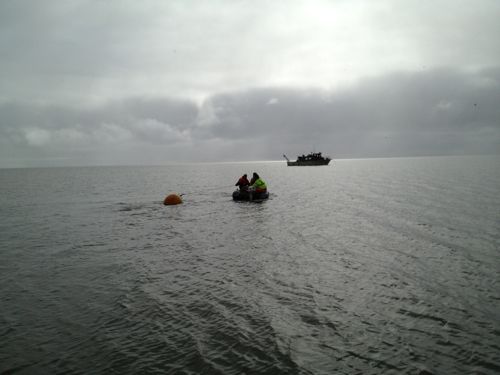
It’s almost 10 PM and I am not sure if I feel sleepy or wide-awake. I got to bed at 3 AM last night, after a long day (~17 hours) on the water. Today was spent in the lab updating the event log, running the flow cytometer, and picking copepods out of the samples that we brought back in last night. Because we are so tired, each task seems to take an eternity. And keeping track of the information for the event log is laborious, I have to check and re-check to make sure I haven’t made any serious mistakes. Now, at the end of the day, I am finally feeling “with it”, just as it is time to go to bed.
We’ve had a busy week, with good weather permitting us to work four days out of the past seven. What a difference from last year! Already we have accomplished the same number of days of sampling as we did during the whole season last year. And all of our equipment is working. We have three electronic sampling systems that we use: (1) An Acrobat towed vehicle that looks like a little airplane, is towed behind the boat and flies up and down through the water by tilting the wings, and is equipped with sensors for temperature, salinity, fluorescence (tells the amount of chlorophyll), and backscatter (an index of the particles in the water), (2) An acoustic Doppler current profiler that we tow next to the boat and that tells us the magnitude and the direction of the currents, and (3) a CTDA research tool that is submerged in the water to measure conductivity (salinity), temperature, and depth. (Conductivity-Temperature-Depth) instrument that we lower from surface to bottom through the water and that tells us the temperature and salinity. When we sample, we go out along a transect towing the ADCP and the Acrobat. We look at the data collected with those instruments and decide where to sample on the way back along the line using the CTDA research tool that is submerged in the water to measure conductivity (salinity), temperature, and depth. and our nets.
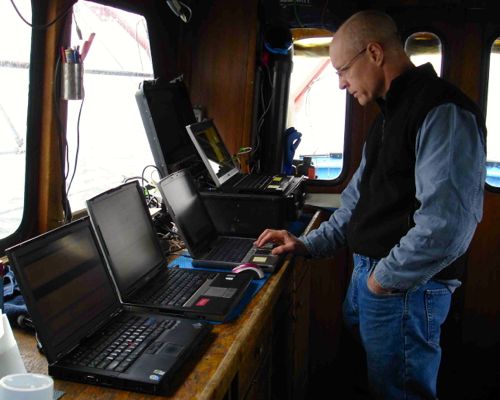
The days are long and grueling. The first part consists of the survey, which is actually sort of boring, except for when we plot up the Acrobat data every hour or look at the currents from the ADCP, and which can take 5-8 hours depending on the length of the transect.
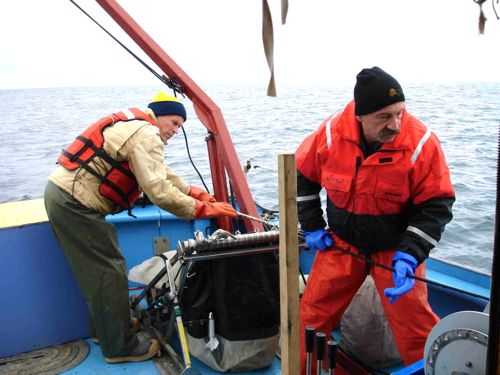
Then the sampling on the way back is fast and furious, with CTDA research tool that is submerged in the water to measure conductivity (salinity), temperature, and depth. stations every 3 miles and plankton nets and water sample collection at some of those CTDA research tool that is submerged in the water to measure conductivity (salinity), temperature, and depth. stations. Dinner falls within the time of the sampling on the way back; it is quite a trick to fit dinner in between our sampling events and to have dinner not end up desiccated because it had to sit around while we finished work at a station. So far we have had our traditional spaghetti dinner for the first long sampling day, followed by baked chicken on the second long sampling day, and baked pork chops on the third long sampling day. There is a theme here…baked. It is much easier to put something in the oven than to deal with pots on the stove. However, we are going to get more ambitious on our next sampling date and are contemplating stir fry (or green curry).
In addition to the long hours, we have a new adventure this year: getting out to Niksiuraq (Little Fish Hook), the spot in Elson Lagoon where the boat anchors. There is a road that runs out to the NE from town along the spit between Elson Lagoon and the Chukchi Sea. If one stays on the road long enough, one gets to NuvukThe Iñupiaq name for Point Barrow and the people who lived there. or Point Barrow, the northernmost spot in Alaska. The City of Barrow has a boat launch at Niksiuraq. Because it is located in Elson Lagoon, conditions there are more reliably favorable for launching boats and it is a very popular location for that. However, a storm earlier this year washed out the road to the south of Niksiuraq (coastal erosion is a big problem in AK because, with reduced sea ice, wind-driven waves during storms are much larger).
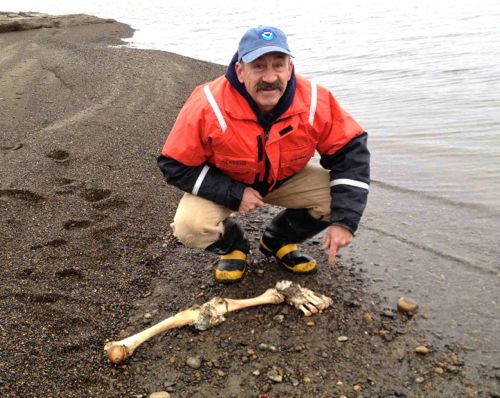
The road is being fixed but in the meantime, it is “closed” (proceed at your own risk). This is the new adventure – driving in deep sand without getting stuck. I am sure that it is going to happen one of these days. I am just hoping that it happens during the day when one of the large front-end loaders is around and might be persuaded to pull us out rather than at night, when no one is around.
Niksiuraq itself is very quiet, strangely so. There are few boats launched there, given the condition of the road. Niksiuraq also is a very popular destination for people driving around to see what is going on. Surprisingly, we still run into people who appear to have driven out on the treacherous road to Niksiuraq where they circle around through the parking area and then return to Barrow, even at 1:30 in the morning!
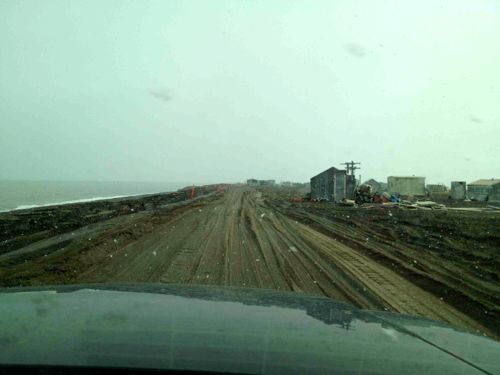
After our first night of sampling, it was snowing as we drove back in the near-darkness, along the gray road, through the drifts and dunes, with the buildings of Duck Camp on one side and newly filled and placed sandbags holding the Chukchi Sea at bay on the other side. That morning, when we awoke, there was a dusting of snow across the tundra, on piles of dirt, and on vehicles. The weather has been quite pleasant, with temperatures in the 30s and 40s (one night it went down into the 20s). The sun occasionally breaks through and changes the complexion of the landscape from black/gray/white to oranges and blues.

We have four transect lines that we want to survey, hopefully twice for some of them. So far, we have surveyed three of the four lines. This afternoon, the wind blew up and is now about 20 knots out in Elson. We hope to get out again in a few days.
*PolarTREC Journal written by research scientist Dr. Carin Ashjian. Journal and photos posted by Springs School PolarTREC Educator Lisa Seff.


Comments